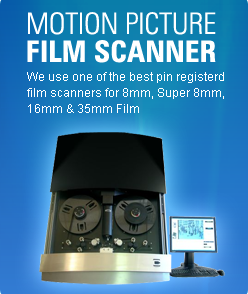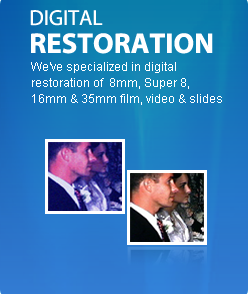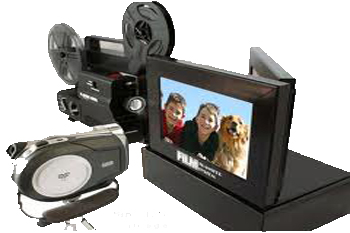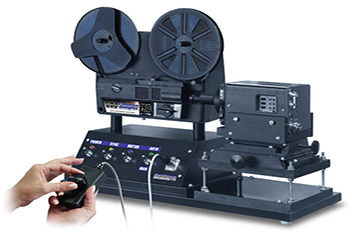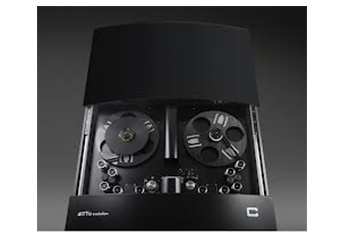
Film Conversion Equipment
Film Scanning and Film Transfer Equipment Types
The type of film scanning machine used for your 8mm, Super 8 or 16mm film conversion will have as much of an impact on the quality you receive as the resolution of the scan itself will. For example, if you wanted to digitize a photograph and tried doing it two different ways. You first put the photograph down on a table and took a picture of it using your smart phone or camera. Then you took the picture and scanned it using a flatbed scanner. If you compare the two side by side on your computer it will become really obvious that the flatbed scanner produced a digital image as good as the photograph. However, the picture you took with your phone or camera does not look close to the quality of the original photograph.
The same goes for scanning your 8mm, Super 8 or 16mm film. The real-time and frame by frame machines below are using a camcorder to take a picture of your film. The motion picture film scanner and Datacine machine are scanning the film. The results will be significantly different.
Film Conversion Equipment |
|
Real Time
|
|
Frame by Frame
|
|
Professional Film Scanners
|
|
So, at this point you’ve learned that film transfers can capture at standard definition (480 lines), high definition (1080 lines) or 2K (1556 lines). You’ve also learned about the 3 different types of film transfers being used today. In order from least to best quality we have:
Arvada Fun Facts: Arvada is a Colorado city located in the counties of Jefferson and Adams, only 8 miles from the state capital of Denver. The city is accessible to three interstate highways (I-70, I-76 and I-25) and is also serviced by Colorado State Highway 58. Surrounding communities include Westminster (to the north), Golden (to the west), and Lakewood (to the south). The origins of Arvada can be traced back to 1850, when traveling prospector Lewis Ralston made an unexpected gold discovery in a local mountain stream.
Colorado Fun Facts: During the Plains Indian Wars (1860s-80s), Colorado’s wild frontier was the scene of intense fighting between Native Americans and white settlers. In the 21st century, Colorado continues to rely on its natural resources as well as agriculture and tourism to sustain its economy. Colorado, which joined the union as the 38th state in 1876, is America’s eighth largest state in terms of land mass. Located in the Rocky Mountain region of the western United States, the state’s abundant and varied natural resources attracted the ancient Pueblo peoples and, later, the Plains Indians.
